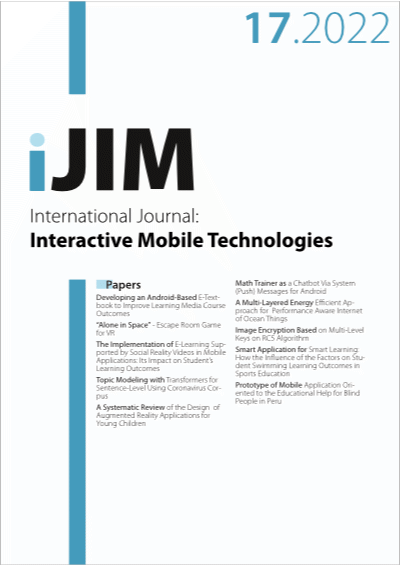A Multi-Layered Energy Efficient Approach for Performance Aware Internet of Ocean Things
DOI:
https://doi.org/10.3991/ijim.v16i17.34405Keywords:
Internet of Underwater Things, Internet Connected Underwater Acoustic Net-works, IoUT, and Marine Applications, Ocean of ThingsAbstract
Over seventy-one percent of the Earth's surface is covered by oceans, a vast body of water that is sometimes divided up into smaller bodies of water called seas. Research in this area is focusing on the significant advantages of an undersea or ocean-based environment, which is impacted by the ocean's temperature. Freshwater lakes and rivers cover less than 1% of the Earth's surface. So, ecosystems are damaged and modern technology must be developed so that climate and other elements may be regulated. The Internet of Underwater Things is cutting-edge technology in the ocean and underwater environments (IoUT). It's a network of underwater items that can be used to monitor large, undiscovered aquatic areas with a real-time Internet connection. There are several uses for IoUT, including in the military, strategic fields, climate research, and thermal pollution monitoring. With the use of the World Wide Web, Ocean of Things (OoT) devices may communicate in real-time using this technology. An IoUT is one of the most important IoT areas where a dynamic network is built and many advantages are reaped from the process. Using a multi-dimensional method for cumulative performance in the marine and undersea objects area, this research publication presents use examples for IoUT. Many significant applications and real-world domains are demonstrated to interface with crucial IoUT components. The proposed approach is making use of a multi-hop and metaheuristic-based approach for the effectiveness and overall performance of IoUT. As there are so many challenges in IoUT including frequent battery reduction and energy issues, there is a need to integrate the multi-layered approach. The presented approach is effective in terms of fewer packet losses, high throughput, and minimum energy consumption.
Downloads
Published
How to Cite
Issue
Section
License
Copyright (c) 2022 Haider Th.Salim Alrikabi; Sinan Adnan Diwan

This work is licensed under a Creative Commons Attribution 4.0 International License.


